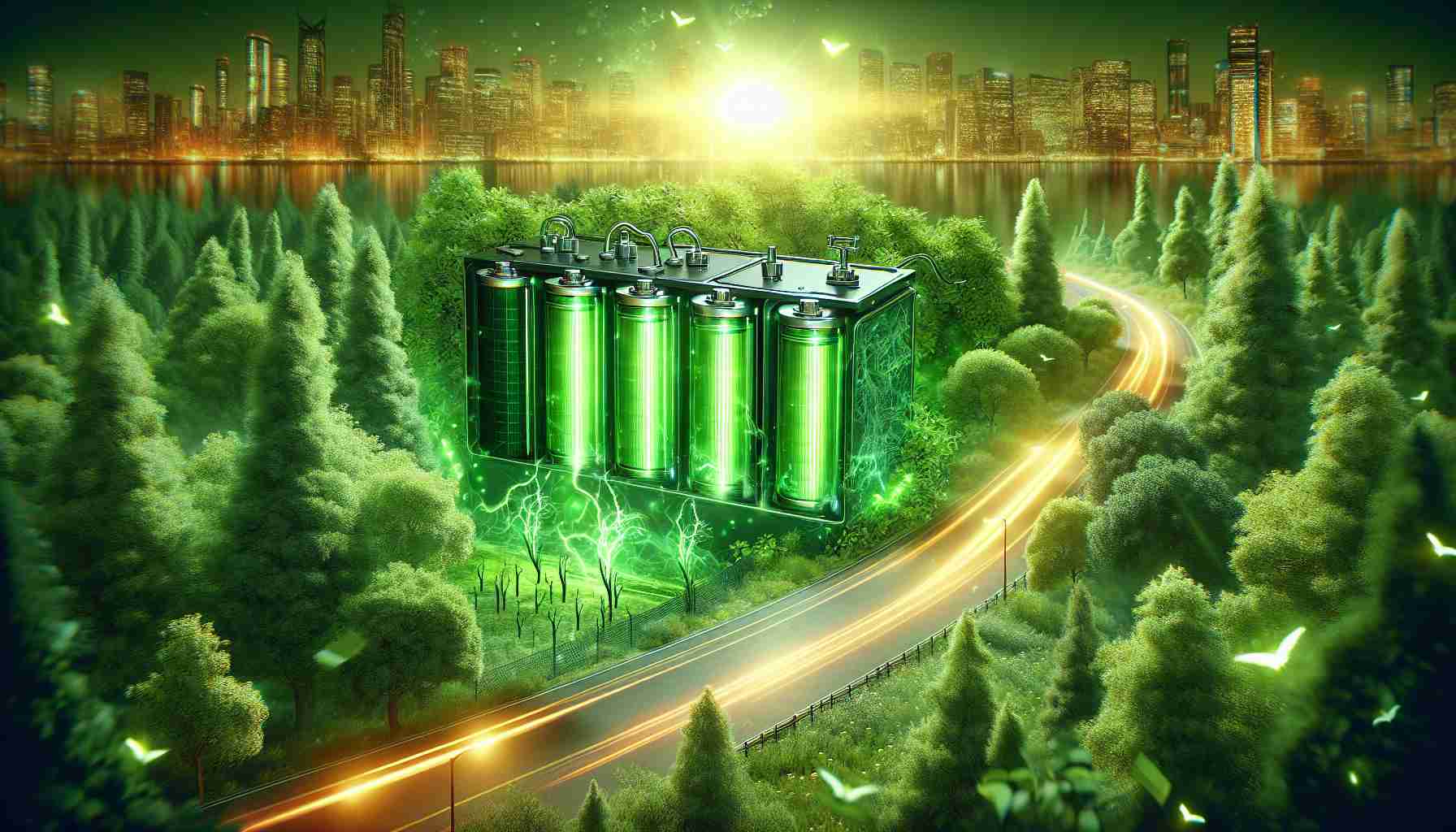- Solid state batteries offer superior energy density, promising smaller and lighter devices with longer battery life.
- Increased structural stability reduces fire risks, enhancing safety standards over traditional lithium-ion batteries.
- Environmental sustainability is bolstered as solid state batteries are more durable and avoid hazardous chemicals.
- Main barrier to widespread use is high production costs, though these are expected to decline with advancements.
- Technological and sustainable benefits position solid state batteries as a revolutionary force in energy storage.
In the rapidly evolving landscape of renewable energy, solid state batteries are emerging as a game-changing technology that could redefine how we power everything from smartphones to electric vehicles. Departing from traditional lithium-ion batteries, solid state batteries use a solid electrolyte instead of a liquid one, offering several critical advantages.
At the forefront of this innovation is their superior energy density, which means these batteries can store more energy in a smaller space. This advancement could lead to smaller, lighter devices with longer battery life, addressing one of the significant limitations of current technology. Moreover, their structural stability inherently reduces the risk of fires—a notorious issue with conventional batteries—elevating safety standards across the board.
Environmental sustainability is another crucial benefit. Solid state batteries are not only more durable, which extends their lifespan, but they also eliminate the need for hazardous chemicals found in their liquid counterparts. This positions them as a green alternative that could significantly lower the carbon footprint of battery production and disposal.
Despite these advantages, the widespread adoption of solid state batteries faces challenges, chiefly production costs. However, as research progresses and economies of scale are achieved, experts anticipate a decrease in these costs, making this cutting-edge technology more accessible.
The transition to solid state batteries heralds a potential revolution in energy storage, paving the way for a future where technology and sustainability go hand in hand. As industries adapt, keep an eye on this transformative shift that promises to shape a greener, smarter world.
Solid State Batteries: The Hidden Revolution Powering Tomorrow’s Technology
What are the primary advantages of solid state batteries over traditional lithium-ion batteries?
Solid state batteries provide several key advantages compared to traditional lithium-ion batteries. These advantages include:
1. Higher Energy Density: Solid state batteries can store significantly more energy in the same volume. This attribute is crucial for applications requiring compact, high-energy storage solutions, such as smartphones and electric vehicles (EVs).
2. Improved Safety: By replacing the liquid electrolyte with a solid one, solid state batteries reduce the risk of leaks and fires, which are common safety concerns in lithium-ion batteries.
3. Environmental Sustainability: The absence of hazardous liquid electrolytes makes solid state batteries more environmentally friendly. Their longer lifespan also means fewer replacements, reducing waste and production emissions.
4. Structural Integrity: Solid electrolyte materials enhance the mechanical durability of these batteries, making them more resilient to physical shocks and temperature fluctuations.
For more on innovative battery technologies, check out CATL.
What challenges are currently impeding the widespread adoption of solid state batteries?
Despite their potential, several challenges hinder the widespread adoption of solid state batteries:
1. High Production Costs: The cost of materials and manufacturing processes for solid state batteries is currently higher than that for lithium-ion batteries. Economies of scale are expected to bring down costs, but significant investment in research and infrastructure is needed.
2. Material Challenges: Finding suitable solid electrolyte materials that offer both high ionic conductivity and excellent chemical stability remains a challenge. Many promising materials are either expensive or challenging to produce at scale.
3. Manufacturing Complexity: The production process for solid state batteries is more complex, making it difficult to scale up quickly. Developing new manufacturing techniques that can handle large-scale production efficiently is crucial.
4. Limited Commercial Availability: Currently, solid state batteries are primarily in the experimental and prototyping stages, with few commercial applications. Scaling production from prototypes to mass-market devices presents logistical and technical hurdles.
Explore further technological advancements at Toyota.
What is the future outlook for solid state batteries in the energy market?
The future of solid state batteries looks promising, driven by rapid technological advancements and increasing investments:
1. Market Growth: Analysts predict a significant rise in the demand for solid state batteries, especially in the EV sector as major automotive manufacturers aim to achieve greater efficiency and safety.
2. Ongoing Research and Innovations: Continuous research is likely to address current material and manufacturing challenges, leading to breakthroughs that will lower costs and enhance efficiency.
3. Sustainability Trends: As the push for greener technologies intensifies, solid state batteries will increasingly be positioned as a preferable alternative due to their reduced environmental impact.
4. Integration in Consumer Electronics: Besides EVs, solid state batteries are expected to find applications in portable electronics, wearables, and energy storage systems, further driving market growth.
For an in-depth analysis of future battery technologies, visit Reuters.
As the world shifts toward sustainable energy solutions, solid state batteries are poised to play a crucial role in this transition. Their ability to offer safer, more efficient, and environmentally sound energy storage makes them a focal point in the ongoing revolution in battery technology.













